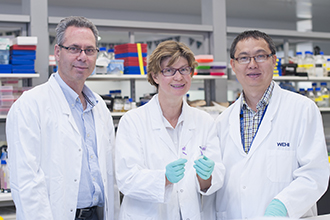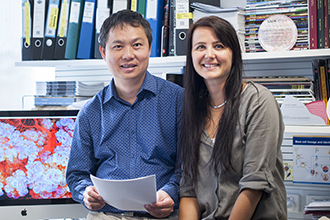Pascual R, Cheng J, De Smet AH, Capaldo BD, Tsai M, Kordafshari S, Vaillant F, Song X, Giner G, Milevskiy MJG, Jackling FC, Pal B, Dite T, Yousef J, Dagley LF, Smyth GK, Fu N, Lindeman GJ, Chen Y, Visvader JE. Fibroblast hierarchy dynamics during mammary gland morphogenesis and tumorigenesis. The EMBO Journal. 2025;44(11):10.1038/s44318-025-00422-3
Chin HS, Cheng J, Hsu SH, Lum GG, Zaldivia MT, Nelameham S, Guo F, Mallavarapu K, Jackling FC, Yang J, Tan JSL, Sampath P, Barker N, Smyth GK, Lindeman GJ, Strasser A, Visvader JE, Chen Y, Chen T, Fu NY. MCL‑1 safeguards activated hair follicle stem cells to enable adult hair regeneration. Nature Communications. 2025;16(1):10.1038/s41467-025-58150-5
Ang CH, Arandjelovic P, Cheng J, Yang J, Guo F, Yu Y, Nelameham S, Whitehead L, Li J, Silver DL, Barker N, Visvader JE, Chow PKH, Smyth GK, Chen Y, Virshup DM, Fu NY. Self-maintenance of zonal hepatocytes during adult homeostasis and their complex plasticity upon distinct liver injuries. Cell Reports. 2025;44(1):10.1016/j.celrep.2024.115093
Cho Y-L, Tan HWS, Yang J, Kuah BZM, Lim NSY, Fu N, Bay B-H, Ling S-C, Shen H-M. Glucose-6-phosphate dehydrogenase regulates mitophagy by maintaining PINK1 stability. Life Metabolism. 2025;4(1):10.1093/lifemeta/loae040
Wan X, Yap J, Chen J, Li Y, Faruk R, Tan NCB, Ma Y, Lim Y, Jubri KB, Hu J, Yuan J, Zhang G, Li Q, Yap YS, Lam P, Wang M, Fu NY, Hu J. Oncogenic non-V600 mutations evade the regulatory machinery of RAF including the Cdc37/Hsp90 chaperone and the 14-3-3 scaffold. Theranostics. 2025;15(5):10.7150/thno.103958
Goh KY, Lee WX, Choy SM, Priyadarshini GK, Chua K, Tan QH, Low SY, San Chin H, Wong CS, Huang S-Y, Fu NY, Nishiyama J, Harmston N, Tang H-W. FOXO-regulated DEAF1 controls muscle regeneration through autophagy. Autophagy. 2024;20(12):10.1080/15548627.2024.2374693
Yang J, Zhang Z, Lam JSW, Fan H, Fu NY. Molecular Regulation and Oncogenic Functions of TSPAN8. Cells. 2024;13(2):10.3390/cells13020193
Yang X, Xu H, Yang X, Wang H, Zou L, Yang Q, Qi X, Li L, Duan H, Yan X, Fu NY, Tan J, Hou Z, Jiao B. Mcam inhibits macrophage-mediated development of mammary gland through non-canonical Wnt signaling. Nature Communications. 2024;15(1):10.1038/s41467-023-44338-0
Ahn M, Chen VC-W, Rozario P, Ng WL, Kong PS, Sia WR, Kang AEZ, Su Q, Nguyen LH, Zhu F, Chan WOY, Tan CW, Cheong WS, Hey YY, Foo R, Guo F, Lim YT, Li X, Chia WN, Sobota RM, Fu NY, Irving AT, Wang L-F. Bat ASC2 suppresses inflammasomes and ameliorates inflammatory diseases. Cell. 2023;186(10):10.1016/j.cell.2023.03.036
Yang J, Guo F, Chin HS, Chen GB, Ang CH, Lin Q, Hong W, Fu NY. Sequential genome-wide CRISPR-Cas9 screens identify genes regulating cell-surface expression of tetraspanins. Cell Reports. 2023;42(2):10.1016/j.celrep.2023.112065




